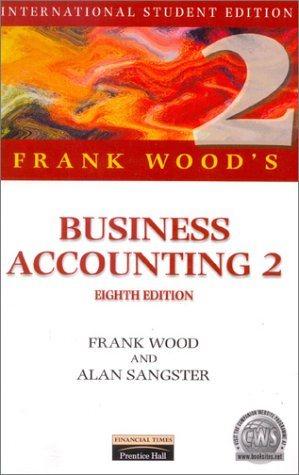Answered step by step
Verified Expert Solution
Question
1 Approved Answer
Year 1 July 1 Issued $76,600,000 of 20-year, 8% callable bonds dated July 1, Year 1, at a market (effective) rate of 9%, receiving cash
| Year 1 | ||
| July | 1 | Issued $76,600,000 of 20-year, 8% callable bonds dated July 1, Year 1, at a market (effective) rate of 9%, receiving cash of $69,552,279. Interest is payable semiannually on December 31 and June 30. |
| Oct. | 1 | Borrowed $220,000 by issuing a six-year, 7% installment note to Nicks Bank. The note requires annual payments of $46,155, with the first payment occurring on September 30, Year 2. |
| Dec. | 31 | Accrued $3,850 of interest on the installment note. The interest is payable on the date of the next installment note payment. |
| 31 | Paid the semiannual interest on the bonds. The bond discount amortization of $176,193 is combined with the semiannual interest payment. | |
| Year 2 | ||
| June | 30 | Paid the semiannual interest on the bonds. The bond discount amortization of $176,193 is combined with the semiannual interest payment. |
| Sept. | 30 | Paid the annual payment on the note, which consisted of interest of $15,400 and principal of $30,755. |
| Dec. | 31 | Accrued $3,312 of interest on the installment note. The interest is payable on the date of the next installment note payment. |
| 31 | Paid the semiannual interest on the bonds. The bond discount amortization of $176,193 is combined with the semiannual interest payment. | |
| Year 3 | ||
| June | 30 | Recorded the redemption of the bonds, which were called at 98. The balance in the bond discount account is $6,342,949 after payment of interest and amortization of discount have been recorded. Record the redemption only. |
| Sept. | 30 | Paid the second annual payment on the note, which consisted of interest of $13,247 and principal of $32,908. |
Required:
| 1. | Journalize the entries to record the foregoing transactions. Round all amounts to the nearest dollar. Refer to the Chart of Accounts for exact wording of account titles. | |||||||||||||||||||||||||||||||||||||||||||||||||||||||||||||||||||||||||||||||
| 2. | Indicate the amount of the interest expense in (a) Year 1 and (b) Year 2. | |||||||||||||||||||||||||||||||||||||||||||||||||||||||||||||||||||||||||||||||
| 3. | Determine the carrying amount of the bonds as of December 31, Year 2.
| |||||||||||||||||||||||||||||||||||||||||||||||||||||||||||||||||||||||||||||||
Step by Step Solution
There are 3 Steps involved in it
Step: 1

Get Instant Access to Expert-Tailored Solutions
See step-by-step solutions with expert insights and AI powered tools for academic success
Step: 2

Step: 3

Ace Your Homework with AI
Get the answers you need in no time with our AI-driven, step-by-step assistance
Get Started


